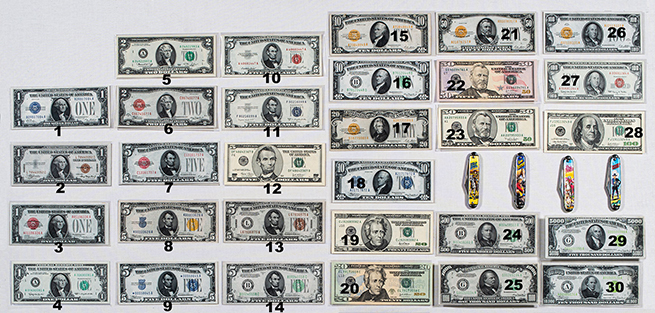
Modern U.S. paper currency is made up of a single type — small-size Federal Reserve Notes issued in 1, 2, 5, 10, 20, 50 and 100 dollar denominations. In 1928 the Bureau of Engraving and Printing (BEP) changed the size for U.S. paper currency from the large size used from 1861 to a new, smaller size to cut costs and to standardize the designs. At the time there were six different types of notes circulating — Legal Tender Notes, Gold Certificates, National Bank Notes, Silver Certificates, Federal Reserve Bank Notes and Federal Reserve Notes with denominations up to $10,000. Gold Certificates, National Bank and Federal Reserve Bank Notes all disappeared during the 1930s because of the Great Depression. Silver Certificates and Legal Tender Notes were discontinued in 1957 and 1971 respectively, though both are still occasionally found in circulation today.
Federal Reserve notes have been undergoing design changes since 1996 in response to increased counterfeiting, a result of new technology. These changes have included the addition of multiple colors for the first time since the early 20th century and the addition of a series of measures such as micro-printing, security threads and color changing inks. The result has been a more colorful and interesting-looking currency, though the basic designs have not changed, in part to prevent confusion in international markets, where the dollar continues to be the preferred currency.
Did You Know?
Paper currency was first issued with “In God We Trust” in 1957. The phrase appears on all currency Series 1963 and beyond.
 |
